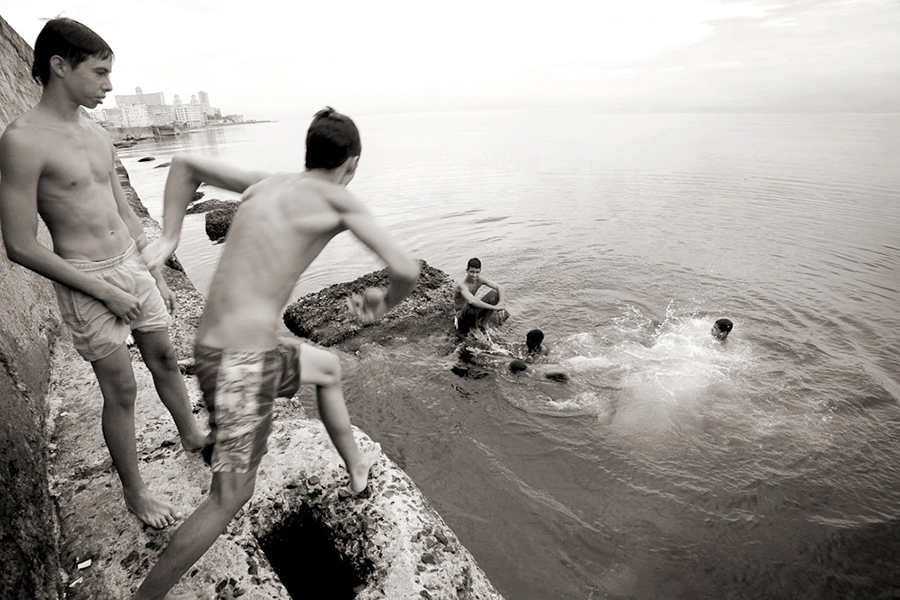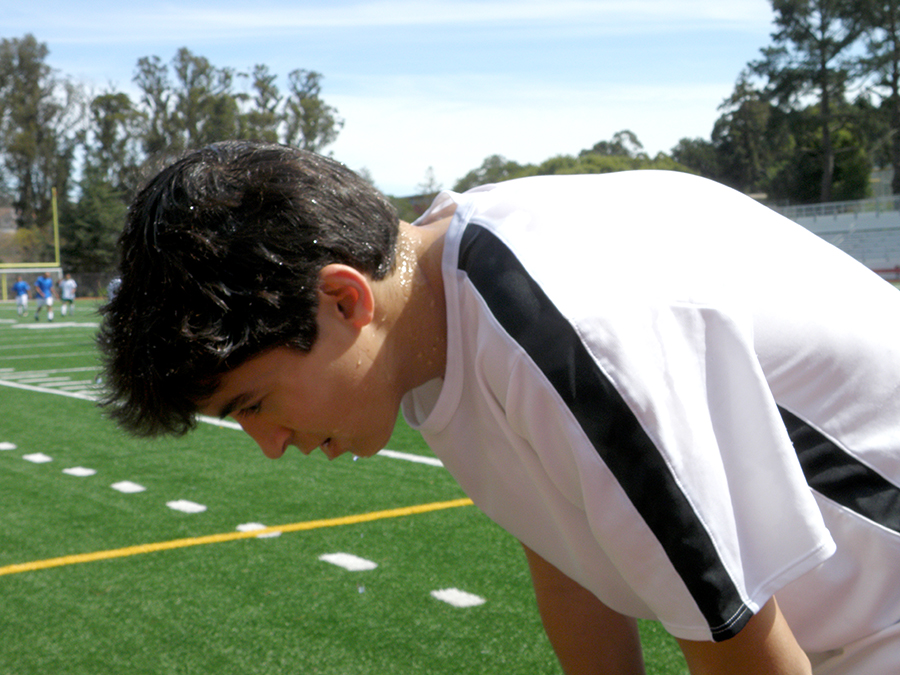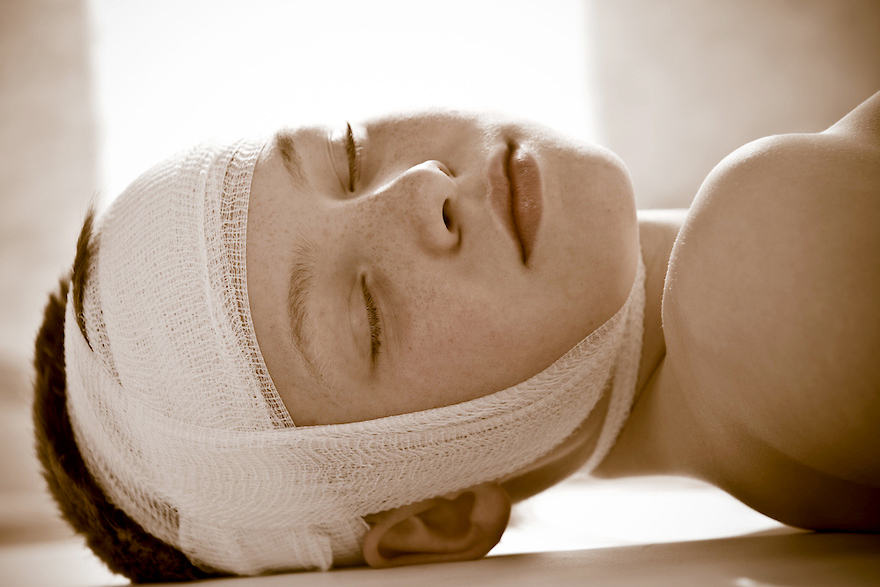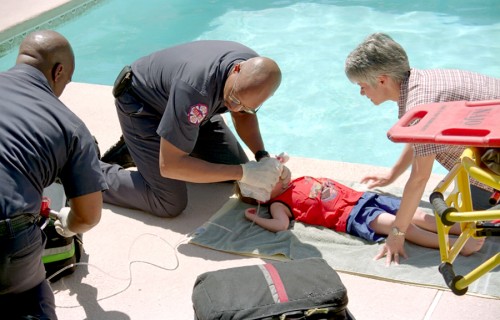Summer Childhood Illnesses and Injuries – Part 1
Summertime is in full swing and the emergency rooms are busy with all the summer childhood illnesses and injuries.
Some of them are the result of mere moments worth of inattentiveness by parents and more of them merely not realizing that the obligatory parental worrying needs to shift focus in the summer from what it has been in the winter.
Paramedics resuscitate toddler drowning victimThe “bucket” of risks children get themselves into is different in the summer. And that’s the purpose of this article, not so much to teach how to treat them; but, that THIS is where much of your limited supply of parental “hovering” should be focused once the snow melts and “tryouts” begin.
Summertime Things to Watch For and Prevent
This list of injuries and illnesses is obviously neither complete nor completely unique to summer, but is those which skyrocket when the weather warms up and those which make up the bulk of visits to emergency rooms and doctor’s offices.
Submersion Injuries
Truly the most feared summer “accident” by parents of small children is a submersion injury – drowning – and for very good reason.
In children under five it is the second leading cause of death! And, residential swimming pools are by far the most deadly locations. In fact, a swimming pool is 14 TIMES (1400 percent) more often the cause of death in this age group than is a motor vehicle.
In addition, the number of deaths is just the tip of the iceberg for the calamities caused by children’s use of swimming pools. There are FOUR HUNDRED percent more swimming pool Non-fatal injuries than fatal ones.
Getting even less than a teaspoon of fluid down the lungs of a child can lead to massive lung impairment – especially if it’s salt water, which is hyperosmolar.
 Teen boys + water + cliffs = divingOnce the lungs go down, secondary hypoxia and ischemic acidosis damage other organ systems like the heart, kidneys and especially brain.
Teen boys + water + cliffs = divingOnce the lungs go down, secondary hypoxia and ischemic acidosis damage other organ systems like the heart, kidneys and especially brain.
The chlorine in a pool also causes a chemical pneumonia and any bacteria, amoebas or fungi (like in lakes, ponds and streams) easily infect the sinuses and lungs as well as the skin.
Diving Injuries
The second on the list is like unto the first: sustaining an injury while flailing one’s body INTO the above mentioned swimming pool – or body of water.
Diving Injuries are injuries which occur predominantly in a young, healthy population which is mostly male – and which often cause a life-long disability: Cervical spine injuries.
Compared to some other issues which will be on this list, these injuries are relatively less common BUT they are so hugely life changing and damaging that no one with intelligence would argue with a family so inflicted that it shouldn’t be listed here at the top.
I say relatively less common because, even though we know the numbers, we don’t know the denominator to calculate the percentage risk. We DO know that over time, diving rules for supervised athletic events have made a significant impact in lowering this type of injury.
The problem is all the unsupervised diving into shallow water that is done. How SIMPLE is it to teach children to NEVER, EVER, EVER dive into ANY water that you haven’t first swam in and made absolutely, positively sure that you couldn’t touch the bottom?
If there is ANY CHANCE that a child has something around a body of water from which they COULD dive – they probably will and they shouldn’t be left unsupervised. Which rule of thumb, unfortunately, extends clear into adolescence – especially adolescents!
Let me show you what our medical texts tell us physicians: “Any diving injury must be treated as an emergency, and the cervical spine must always be considered injured until proven otherwise. Immobilization of the neck in a neutral position until a fracture is ruled out is mandatory.”
 Teen boy with heat exhaustionEven if you didn’t understand all the terminology, you surely got the gist – this is “nuthin’ to fool about.”
Teen boy with heat exhaustionEven if you didn’t understand all the terminology, you surely got the gist – this is “nuthin’ to fool about.”
Heat-Related Illness
The heat produces a host of maladies in humans – and immature humans are particularly susceptible due to their inefficient sweating, higher metabolic rate and just plain undeveloped sense of danger and ability to care for themselves.
There are several stages of “heat illness” from the relatively minor (unless it’s YOU who gets them) heat cramps – usually in the legs, to the full blown heatstroke (sunstroke) which not infrequently causes death.
In the middle there is heat exhaustion with nausea, vomiting, headache, fatigue, anxiety, lightheadedness and syncope (fainting).
The delicate balance of chemicals, hormones and proteins that is a human has a narrow window of temperature in which they function. A temperature which, unfortunately, the planet upon which we reside can exceed… seemingly with impunity.
Higher than 41.1°C (106°F) and you get the dehydrated state where the nervous system (and just about everything else) has a breakdown known as heatstroke – a deadly condition requiring immediate medical attention IF one is to survive.
The temperature level at which the body is at risk is even lowered by factors such as a preceding viral infection, dehydration, fatigue, obesity, lack of sleep, poor physical fitness or lack of acclimatization.
If you’re thirsty, you’re ALREADY behind in your fluids… and if you’re waiting for your urine to turn dark, well, you’re too late and are already stressing your body! Cooling and hydration are critical.
Concussion
 Boy with a concussion, unfortunately increase in summerIf you’ve been reading these pages even a little, you’ve got to realize that a massive amount of research and new information is coming out on this topic all the time.
Boy with a concussion, unfortunately increase in summerIf you’ve been reading these pages even a little, you’ve got to realize that a massive amount of research and new information is coming out on this topic all the time.
We are now beginning to be able to recognize concussions in child athletes better in addition to understanding the catastrophe they can cause to growth and development if not recognized and treated appropriately.
We’ve discovered just how inadequate our previous prevention methods and treatments have been and become aware of the many “vested interests” in the issue all fighting to be heard and mold the discussion in their favor.
The dust hasn’t even begun to settle on this malady yet; BUT, we do know: more kids sustain concussions than we had thought; there are way more side effects than just loosing consciousness; having one takes a lot longer to heal than we ever dreamed; AND, getting a SECOND Concussion is far more likely to cause significant damage.
These days helmets are almost mandatory for most sports, even though they are no guarantee of safety – which makes it a good thing that they’ve almost become… chic.
Children are at particular risk for prolonged symptoms like fatigue, headache and dizziness as well as significant emotional lability (mood swings); and Neuropsychological testing should be strongly considered for children whose symptoms persist beyond 1 week.
A surprising understanding is that not only physical rest is required; but that cognitive rest is even more important in order for a child to heal properly and avoid intellectual and emotional changes.
Acute Otitis Externa
You can surmise that the “externa” part of the name Acute Otitis Externa (AOE) means that it’s an infection of the OUTER ear – notably, the tissues of the ear canal and NOT the eardrum.
Heat and excess moisture – along with frequent swimming – can assist bacteria in gaining a foothold inside the dark, moist auditory canal; specifically Pseudomonas, Staphylococcus and gram-negative organisms, and notably in 7 to 12 year olds.
The outside of the ear usually looks fine but pressing gently on the tragus (the ‘pointy thingy’ in front of the canal) or pulling on the pinna (the ‘floppy’ part) usually causes discomfort. If there’s pus coming from the canal, that’s an even better clue.
TREATMENT: Many different topical drops that can be inserted into the canal including acetic acid, antibiotic mixtures and steroids.
PREVENTION: Don’t put things into the ear that can cause a scratch; carefully and thoroughly dry ears after swimming; avoid swimming in contaminated waters.
COMPLICATIONS: Extension of infection into cellulitis of surrounding skin and bone structures requiring intravenous treatment.
2 Posts in Summer Illnesses (summerillnesses) Series
- Summer Illnesses 2: Poison Ivy - Food Poisoning – 14 Aug 2014
- Summer Illnesses 1: Drowning-Otitis – 2 Aug 2014

